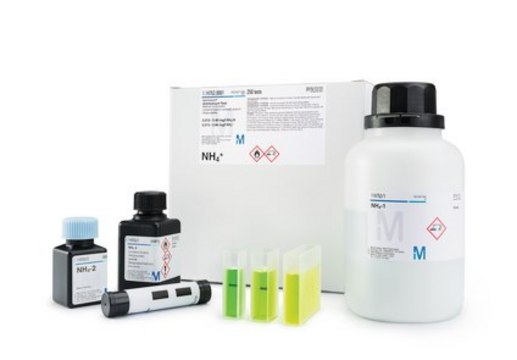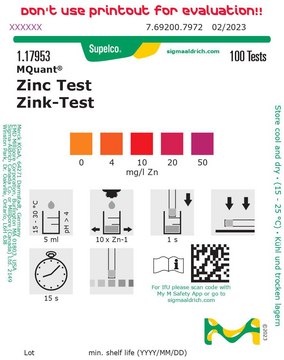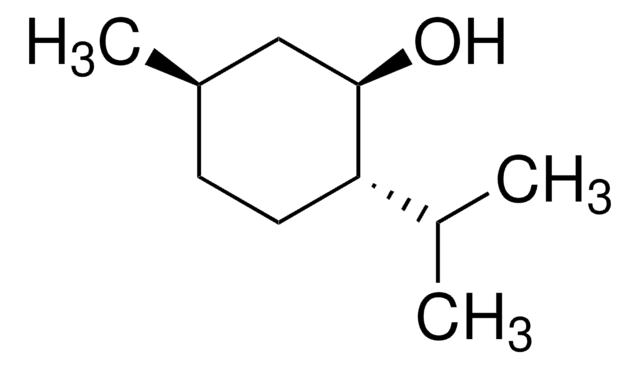MAK032
Zinc Assay Kit
sufficient for 100 colorimetric tests
About This Item
Recommended Products
usage
sufficient for 100 colorimetric tests
application(s)
cosmetics
food and beverages
detection method
colorimetric
relevant disease(s)
cancer; genitourinary disorders; immunological diseases; neurological disorders
storage temp.
2-8°C
General description
The Zinc Assay kit provides a simple and direct procedure for measuring zinc in a variety of samples, including serum, plasma, urine, or cerebral spinal fluid (CSF). Zinc ions bind to a ligand, which results in a colorimetric (560 nm) product proportional to the amount of zinc present.
Suitability
Principle
replaced by
Signal Word
Danger
Hazard Statements
Precautionary Statements
Hazard Classifications
Aquatic Chronic 2 - Eye Dam. 1 - Skin Corr. 1A - STOT SE 3
Target Organs
Respiratory system
Storage Class Code
8B - Non-combustible corrosive hazardous materials
Flash Point(F)
Not applicable
Flash Point(C)
Not applicable
Choose from one of the most recent versions:
Certificates of Analysis (COA)
Don't see the Right Version?
If you require a particular version, you can look up a specific certificate by the Lot or Batch number.
Already Own This Product?
Find documentation for the products that you have recently purchased in the Document Library.
Our team of scientists has experience in all areas of research including Life Science, Material Science, Chemical Synthesis, Chromatography, Analytical and many others.
Contact Technical Service






